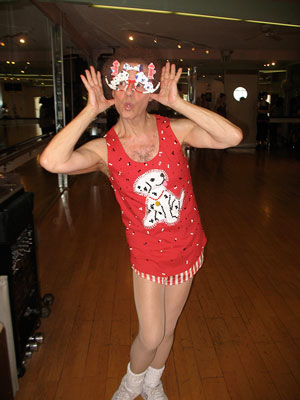After recently absorbing long stories about murder, rape, and child death, I desperately needed a change of pace. So I welcomed the chance to read a profile of 64-year-old Richard Simmons, “Still Richard,” by David Davis for SBNation.com.
 I was suprised to find out that Simmons was still out there, actively teaching aerobics classes and bringing his manic energy to thousands looking to get fit. Davis takes a look at Simmons today and explores his role in the fitness craze of the 1980s.
I was suprised to find out that Simmons was still out there, actively teaching aerobics classes and bringing his manic energy to thousands looking to get fit. Davis takes a look at Simmons today and explores his role in the fitness craze of the 1980s.
The story is one part first-person adventure of a writer trying to keep up with the aging fitness star, and one part reported feature, a thoughtful consideration of Simmons and his legacy.
Davis does a great job here describing Simmons’ big entrance and the feeling the energy in the room:
Suddenly, Richard walks in the room. His day-glo orange tank-top glitters with patterned crystals. The shirt matches his shorts – those trademark striped shorts that always seem a bit, well, short. He wears white tights, white socks and a gleaming pair of white New Balance sneakers. Covering most of his face is a pair of oversized, goofball glasses from the early Elton John collection.
At 64, he is a bit stooped. His kinetic hair, as familiar as Don King’s, is not as full as it once was. His face is no longer youthfully cherubic. But his arms are wiry strong, and his energy level is switched to ON. He personally greets everyone in the room and breaks into song: a rousing chorus of “Matchmaker, Matchmaker, Make me a Match!” is followed by “Hello Muddah, Hello, Fadduh.”
He approaches me, a complete stranger, takes my face in his hands and kisses me on both cheeks. He smells of expensive moisturizer. He tells a slouching woman to stand tall: “Head up! String on your nipples!” he says, motioning with his hands as if he were raising her breasts with two drawstrings.
The energy is contagious. The chattering gets louder and more animated. It feels like we’re about to go on a cruise.
The story weaves back and forth between that class and narrative about Simmons’ rise, career, and slow fade into kitschy nostalgia (for most Americans). Davis uses a nice technique of using quotes or blasts of music to signal the transition between the broader story and the present day narrative. He also uses quotes from Simmons’ books and public appearances to flesh out the context of the man.
The end of the story presents a very likable Simmons, still energetic, still connected deeply with his fans, but also a man who seems lonely and increasingly aware of his mortality:
Does being known as the clown prince of fitness diminish what he does? I wondered. “Absolutely not,” he replied. “When the king is upset, he doesn’t call for the chef. He doesn’t call for the wife. He calls for the little man in the pointed hat. I love comedy. I love having a sense of humor. I had to use that as a child not to get beat up every day because I wasn’t Mr. Masculine. That comedy was my sword and my shield. Still is. There is nobody I’m afraid of.”
He starts to cry. “Whether they laugh at me or with me, it doesn’t matter. Let them laugh loud.”
If I have one problem with this story, it’s that Davis hints at some heartbreak and loss in Simmons’ life, but leaves it floating there on the page, unexplored and unexplained. At the end of the piece, Davis dangles this out there:
“I have loved deeply,” he said. “I have lost intensely. I will never love again. I get that love by people who care for me. No, I don’t take them to bed, but I take their friendship with me in my heart.”
Who is he referring to? Is this a recent loss? Someone from a long time ago? It’s a pretty dramatic statement to include in the story without any context. It is unclear whether Davis didn’t ask a follow-up with Simmons, or whether he did and Simmons didn’t answer. The reader is left in the dark.
Despite that, this well-written profile is a fun read. Simmons is hard not to like. He also seems a little more complex than we would know from his appearances on talk shows and late night television.